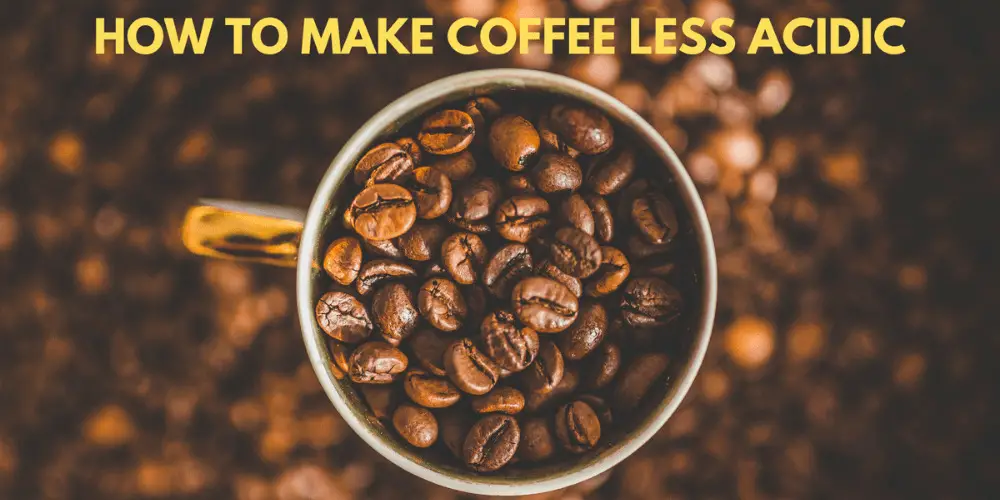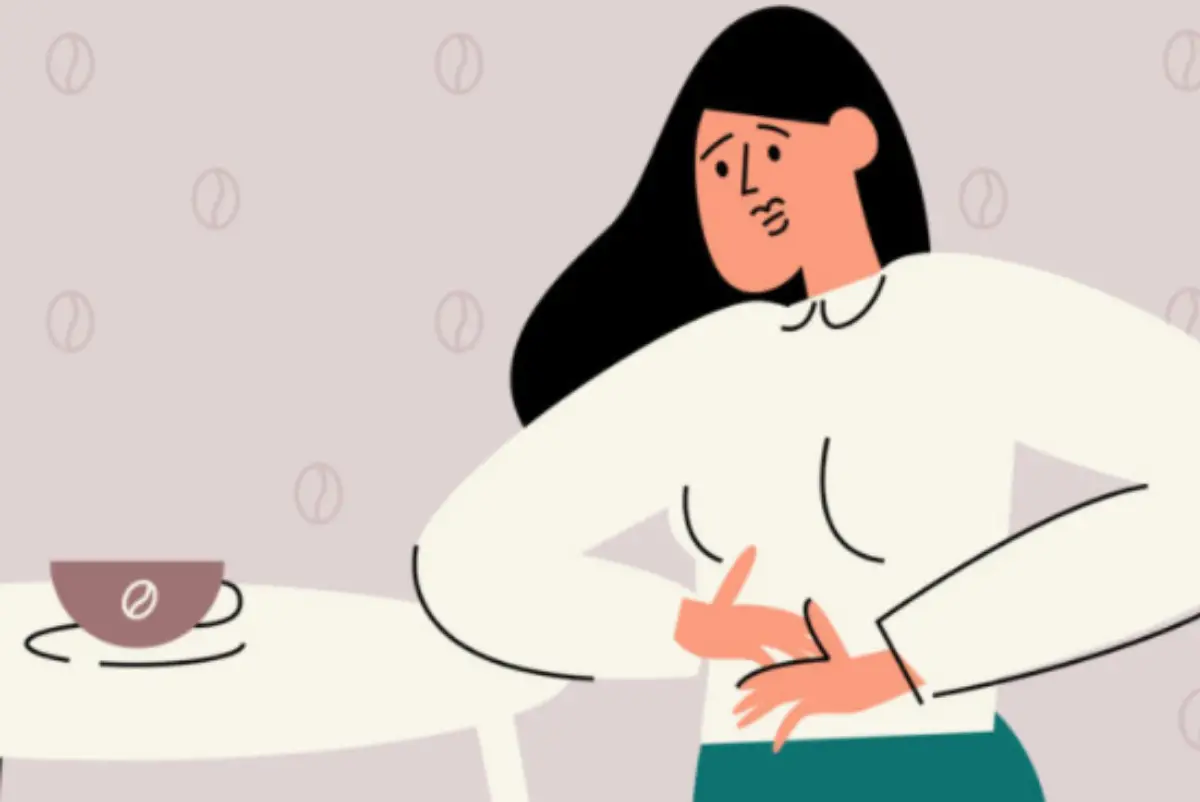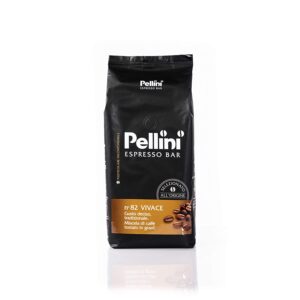Let’s dive straight into coffee acidity and why we’re talking about it. To make sure you get the full picture, we’ll talk about what makes coffee so, and how to make coffee less acidic. Once we’re finished, surely you’ll have some options to subdue your coffee and hopefully your discomforts.
All the best days start with a good cup of coffee but sometimes people experience some discomfort after their favorite morning pick-me-up.
Since you are reading this article you’re probably concerned about acid reflux, heartburn, or even IBS resulting from coffee. No need to worry, all these are common amongst java jockeys and are a result of some particular components that make-up coffee beans.

How to Make Coffee Less Acidic
Since coffee is causing you some discomfort you want to deal with the issue instead of swearing off coffee altogether.
For a simple fix try drinking dark roast or cold brew coffee. If you are making coffee at home, try using a French press as it uses a more favorable coarse grind. Also, the longer brewing time reduces acidity as well. If you want to explore your options fully, here are my suggestions on dealing with acidic coffee.
Brewing Time
Study the brewing method you are using. Makes sure the coffee grind is correct and you are extracting for the right amount of time. Under-extracted coffee will always result in a more acidic coffee which is often the cause of incorrect grind size or brewing time.
Milk
Sometimes reducing the acidity of your coffee can be as simple as mixing it with milk or cream. Be wary of the coffee you are brewing as lighter roasts won’t cooperate with milk the same way darker-roasts can.
Eggshells
If you are making eggs in the morning hold on to those shells for 1 minute and let me explain. Since coffee shells are alkaline mixing them with coffee grinds during the brewing process will neutralize any acidity and bitterness in your coffee.
To do so, all you need is a couple of eggshells from your breakfast. Make sure they are clean and rinsed. Smoosh them into little pieces and add the eggshells into your coffee grinds. If using a drip coffee maker just let them sit at the bottom of the container that usually holds your coffee grinds.
If you are brewing using any of the manual methods such as a French press or Moka pot just mix the eggshells with your coffee grinds and brew as usual. You may be surprised by the results. Since the shells will absorb most of the acidity of the beans your coffee will come out smooth and less bitter than before.
Salt
A common ingredient to coffee enthusiasts can seem a little odd to anyone hearing about it for the first time. Salt can either be used during the brewing process or it can be added to the finished cup. It tends to neutralize the acid in the coffee and smoothen it out a little as well.
When adding to an already brewed coffee, add no more than just a pinch of salt. If you decide to brew your pot with salt, then a good starting point is a teaspoon of salt for every six tablespoons of coffee grounds.
Cold Brew
Switch to cold coffee! This type of coffee has become common amongst people suffering from coffee discomforts as it can be up to 65% less acidic than regular coffee. The brewing process uses cold water during the extraction which nullifies the acid in the coffee beans.
Acid Reducers
If you are looking for a quick fix without changing any of the brewing methods or coffee beans you are currently using, you can just simply add an acid reducer to your coffee.
Something so simple as Prelief can reduce your coffee acidity by 95%. So, if you don’t want to change how you make coffee, but the heartburn or acid reflux is bothering you, just mix Prelief in your cup. This way you won’t change the flavor but deal with the discomfort.
Coffee Acidity
When we mention coffee acidity most people tend to think of either the sour taste or the strong aroma of their java. Acidity in large part has to do with one of many components of a coffee bean that is released during the coffee extraction, or brewing process.
To understand coffee acidity, you need a basic grasp of a pH scale that measures the acidity level of any given liquid. If you recall science class, acidity is measured by pH on a scale from 0 to 14. Liquids below a pH of 7 are acidic and those above the scale of 7 are basic.
Coffee has a pH between 4.85 to 5.10. For comparison, vinegar has a pH of 2, while orange juice has a pH of 3. Pure water has a neutral pH of 7.
So, what exactly is making coffee acidic. The reasons vary as several factors can affect the acidity levels of your favorite brew.
Key Factors
The amount of acidic taste coffee will have is determined mostly by where the beans come from, roasting methods, brewing techniques, and the coffee grind size you are using.
Coffee from Guatemala, Ethiopia, and Peru tends to be more acidic because of the volcanic soil used to grow the coffee beans. Even though coffee from these countries is delicious it should be avoided by anyone suffering discomforts after coffee. Instead, try coffee originating from Sumatra.
The way coffee beans are prepared and roasted is one of the major factors. Specifically, the length of the roast and even the temperature used will have a direct effect on the acidity of coffee.
A longer roast with increased temperatures results in lower acid levels. Unfortunately, most of us don’t roast our own beans so this won’t be something you can control.
What you can control is how you are brewing the coffee and which grind size you are using. Small grounds tend to be more acidic since more of the surface area encounters the water during the brewing process. This results in more acid being extracted from the beans.
The common solution to this problem is to brew coffee with a French press. It uses a coarse coffee grind, and the brewing time is completely up to the user.

Low Acid Coffee Beans
Coffee farmers have been conjuring a solution to the issues of acidic coffee for years. They have come up with a few beans worth looking at.
Summary
Coffee can be the cause of heartburn, acid reflux, and IBS because of its acidic levels. It’s perfectly normal to feel these side effects of coffee.
Scientifically it has an average pH of 4.85 to 5.10, which makes coffees rather acidic. Origin of the beans, brewing time, coffee grind size, and how it’s roasted are the major elements that result in how acidic your coffee will turn out.
Choose any of the above methods to make coffee less acidic as a starting point and keep trying. If you don’t want to change anything just reach for an acid reducer to keep your coffee the way it is now.
Related Questions
Which Coffee is the Most Acidic?
Since it’s clear that coffee beans roasted for longer, under hotter temperatures, end up being less acidic that means lighter roasts would have higher acidity levels.
Which is More Acidic Coffee or Tea?
Overall the pH levels of tea tend to be slightly higher than those found in coffee. Although, it really depends on the origin of your coffee and tea. Since there are so many varieties of tea and coffee, of course, it’s hard to say that one is definitively more acidic than the other.
I’ve always seen coffee as a way of bringing people together. Everywhere I go people seem to enjoy a fresh cup of coffee and that’s what drives my passion. There’s always a new brew to master, and there’s always a new face to enjoy it with. Hitch a ride with me on a coffee-fueled adventure to find a perfect cup.


